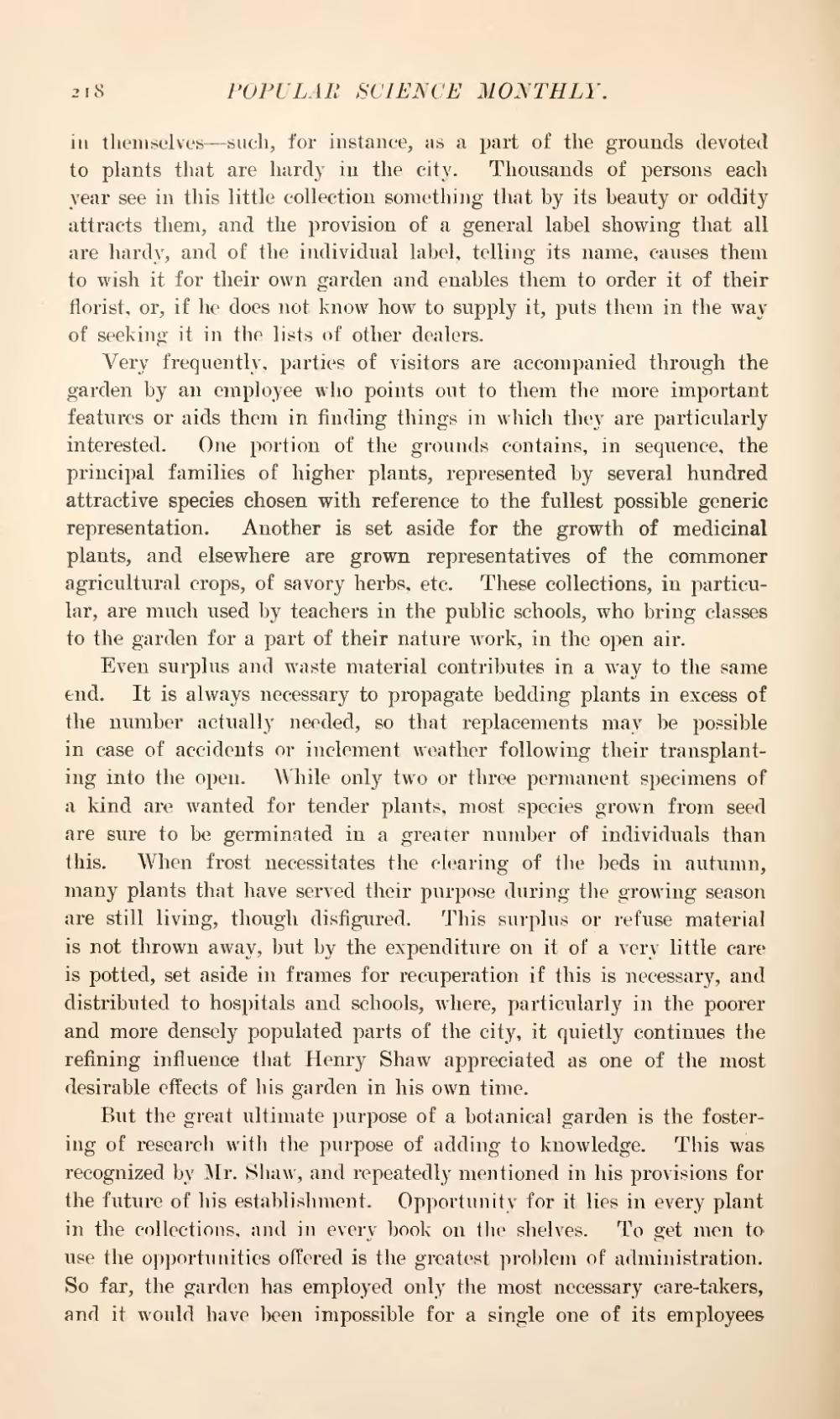in themselves—such, for instance, as a part of the grounds devoted to plants that are hardy in the city. Thousands of persons each year see in this little collection something that by its beauty or oddity attracts them, and the provision of a general label showing that all are hardy, and of the individual label, telling its name, causes them to wish it for their own garden and enables them to order it of their florist, or, if he does not know how to supply it, puts them in the way of seeking it in the lists of other dealers.
Very frequently, parties of visitors are accompanied through the garden by an employee who points out to them the more important features or aids them in finding things in which they are particularly interested. One portion of the grounds contains, in sequence, the principal families of higher plants, represented by several hundred attractive species chosen with reference to the fullest possible generic representation. Another is set aside for the growth of medicinal plants, and elsewhere are grown representatives of the commoner agricultural crops, of savory herbs, etc. These collections, in particular, are much used by teachers in the public schools, who bring classes to the garden for a part of their nature work, in the open air.
Even surplus and waste material contributes in a way to the same end. It is always necessary to propagate bedding plants in excess of the number actually needed, so that replacements may be possible in case of accidents or inclement weather following their transplanting into the open. While only two or three permanent specimens of a kind are wanted for tender plant,?, most species grown from seed are sure to be germinated in a greater number of individuals than this. When frost necessitates the clearing of the beds in autumn, many plants that have served their purpose during the growing season are still living, though disfigured. This surplus or refuse material is not thrown away, but by the expenditure on it of a very little care is potted, set aside in frames for recuperation if this is necessary, and distributed to hospitals and schools, where, particularly in the poorer and more densely populated parts of the city, it quietly continues the refining influence that Henry Shaw appreciated as one of the most desirable effects of his garden in his own time.
But the great ultimate purpose of a botanical garden is the fostering of research with the purpose of adding to knowledge. This was recognized by Mr. Shaw, and repeatedly mentioned in his provisions for the future of his establishment. Opportunity for it lies in every plant in the collections, and in every book on the shelves. To get men to use the opportunities offered is the greatest problem of administration. So far, the garden has employed only the most necessary care-takers, and it would have been impossible for a single one of its employees
